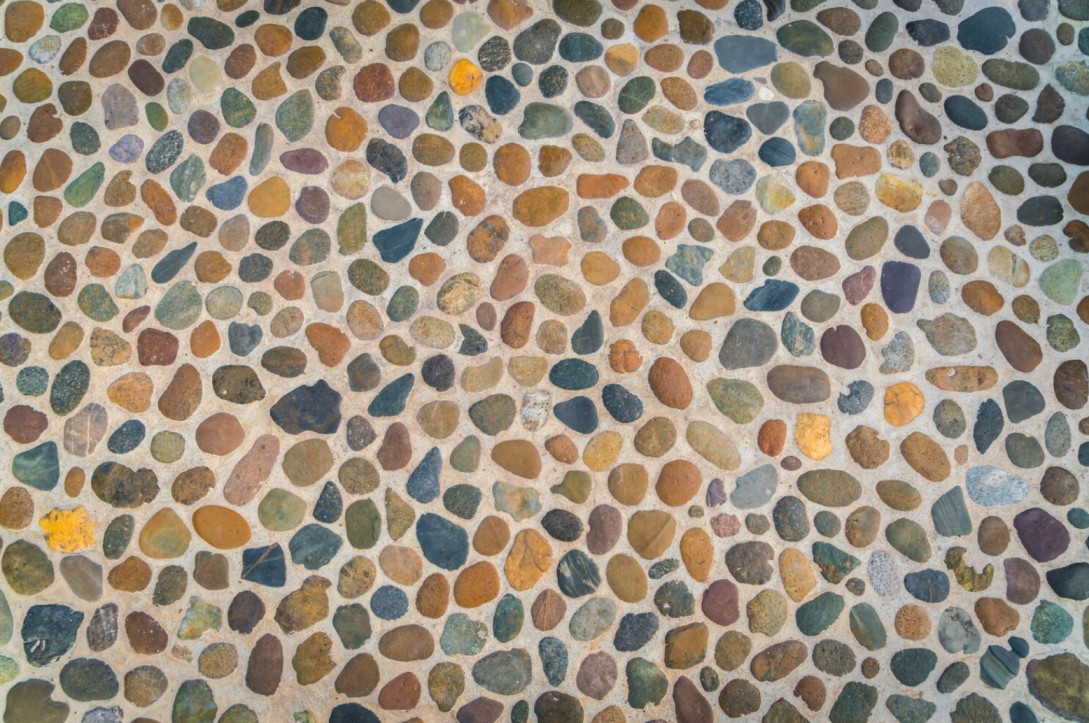





Limestone is a well-known type of stone that may refer to several different stone formations made with the same main component: calcium carbonate. True limestone naturally forms when springs and other bodies of water precipitate, leaving behind calcium-like minerals that eventually layer into limestone.
Over the years, limestone has been used mostly for construction and building processes as aggregate in concrete, pulverized with resins to create engineered stone and more. However, the stone has also been used for tiles, walls, and as heat-resistant countertops.
Benefits of Limestone
Appearance
Limestone can come in multiple colors from white to beige, and even shades of green depending on the composition of minerals in the stone. The most common hues of the stone would range between a cream to gray color, but gold varieties also exist. There are also peach, yellow, and blue-gray shades that can be used for decorative purposes, giving homeowners and interior designers a wide range of options to choose from.
Heat Resistance and Resilience
One of the sought-after benefits of limestone is the stone’s resistance to heat. As kitchen countertops, the stone can be safely used in food preparation and takes no damage from hot pots and pans set on the stone. However, the stone is relatively soft and porous, so limestone countertops will typically have a penetrating sealant to keep the surface clean.
How to Clean Limestone Floors and Surfaces
Regular Cleaning
Limestone is water-resistant, heat-resistant, and scratch-resistant, which makes everyday routine cleanings much simpler. If you’re simply cleaning as a part of your regular cleaning routine, then all you need is a cloth dampened with water. Use this to wipe over the entire surface before drying it with another clean cloth.
Stain and Spill Removal
The porosity of limestone means that you don’t want to leave any stains or spills unattended for too long as this will risk these messes absorbing into the material.
Step 1: Prepare the Stained Area
The cardinal rule when it comes to cleaning up stains is that you need to do it quickly as this will prevent any liquid or residue from soaking too deeply into the limestone. Get a clean cloth and blot away as much of the stain as you can, making sure to not rub or scrub.
For solid particles, remove as much as you can before blotting. This also includes sweeping up any dirt, dust, and debris in the process.
Step 2: Prepare Cleaner
You can make an easy cleaning solution by adding a few drops of mild liquid detergent into a bowl or bucket of warm water. Mix everything until you’re left with some nice soapy water.
Step 3: Begin Wiping
Get a clean cloth and dip this into your cleaning solution, making sure to squeeze out all the excess liquid. Use gentle circular motions and work in small areas at a time until you’ve covered the entire area. Rinse and wring the cloth as much as needed and repeat this process until the stain has completely lifted.
Step 4: Rinse and Dry
When the stain is finally gone, get another clean cloth and dampen this with some warm water before wiping this over everything one last time to remove any remaining soap. And finally, get one last clean cloth and use this to wipe the area dry.
Other Cleaning Tips

Avoid Harsh Cleaners and Chemicals
Due to its high calcium carbonate content, acidic solutions and harsh chemicals will easily dissolve limestone, and a bubbling reaction will occur when this is applied directly on the surface. For this reason, it is recommended to seal limestone with a penetrating varnish to protect the stone from damage.
Avoid Exposure to Too Much Liquid
When you’re dealing with natural stone materials, it might not be the best idea to leave excess moisture and liquid as these can seep into the pores of the stone, especially when the material is left unsealed. This means that any cleaning solution should be applied to a cloth rather than directly onto the surface and that any liquid spill should be wiped away immediately.
Avoid Abrasive Cleaners and Cleaning Tools
Using rough and abrasive items like abrasive cleaners, scrub brushes, scouring pads and more can potentially leave scratches on your limestone and dull its appearance. For cleaning, make sure to only use soft and smooth cloths and fabrics.
Leave it to the Professionals
Luce offers a wide range of affordable household and commercial cleaning solutions that you can personalize to fit your unique cleaning needs, including those that expertly handle and care for your limestone surfaces.
Send Luce a message today to schedule an appointment!






















